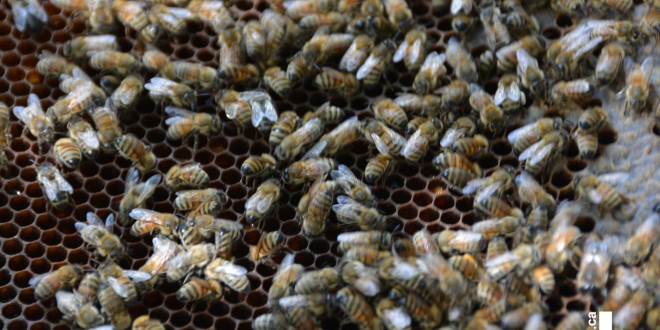**** CWF Media Release
The Canadian Wildlife Federation (CWF) is calling for the creation of a national pollinator recovery strategy featuring pollinator pathways and a comprehensive pollinator monitoring program.
“It is imperative that we invest in initiatives to reverse the effects that pesticides and habitat loss have had on our pollinators,” says Carolyn Callaghan, CWF senior conservation biologist. “We must work diligently in the coming years to create habitat that will ensure pollinators can overcome current threats. This will require not only the voices of Canadians, but also significant investment in the work that lies ahead.”
Pollinators, such as bees, butterflies, moths and flies, play critical roles in ecosystems and in the production of our food. Globally, 90 per cent of flowering plants are dependent entirely or in part on animal pollination. Despite the important services they provide, the populations of many wild pollinators are declining, largely due to changes in their habitat, intensive agricultural practices and pesticide use, invasive species, disease and climate change. Many gaps exist in our knowledge of the world’s pollinators — and what we do know isn’t good news. By some estimates, 40 per cent of pollinators — particularly bees and butterflies — are facing extinction. We don’t know how serious the problem is in Canada overall, because we don’t measure it at a national or provincial level. Few research projects across the country have focused on long-term trends in pollinator abundance.
That’s why CWF is asking Canadians to sign a petition to the federal environment minister proposing an action plan that would include corporations, municipalities, provinces, territories and Indigenous peoples in creating the National Pollinator Monitoring Program and establishing habitat restoration projects in areas such as city parks, right-of-ways and along roadways to create pollinator pathways. Protection of our remaining native grasslands would also be an important element of the action plan.
“The good news is that much can be done to bring pollinator numbers back. We can create habitat by planting pollinator-friendly plants along roadsides, in parks, along utility corridors and even in our backyards and schoolyards. We can support sustainable and regenerative agricultural practices, including crop rotation and retaining hedgerows and wildflower strips. With this comprehensive approach Canada could be a leader in environmentally sustainable practices. It’s critical to the survival of our pollinators and their habitat, and it would have a positive impact on our food supply,” Callaghan says.
Last year, 100,000 Canadians signed CWF’s petition to ban neonicotinoid pesticides. Species recovery is the next step in CWF’s ban with a plan. Learn more about the pollinator pathway and monitoring program and sign the petition at banwithaplan.org.
About the Canadian Wildlife Federation:
The Canadian Wildlife Federation is dedicated to fostering awareness and appreciation of our natural world. By spreading knowledge of human impacts on the environment, conducting research, taking action to conserve habitat and wildlife, recommending legislative and policy changes, and co-operating with like-minded partners, CWF encourages a future in which Canadians can live in harmony with nature. Visit CanadianWildlifeFederation.ca for more information.

